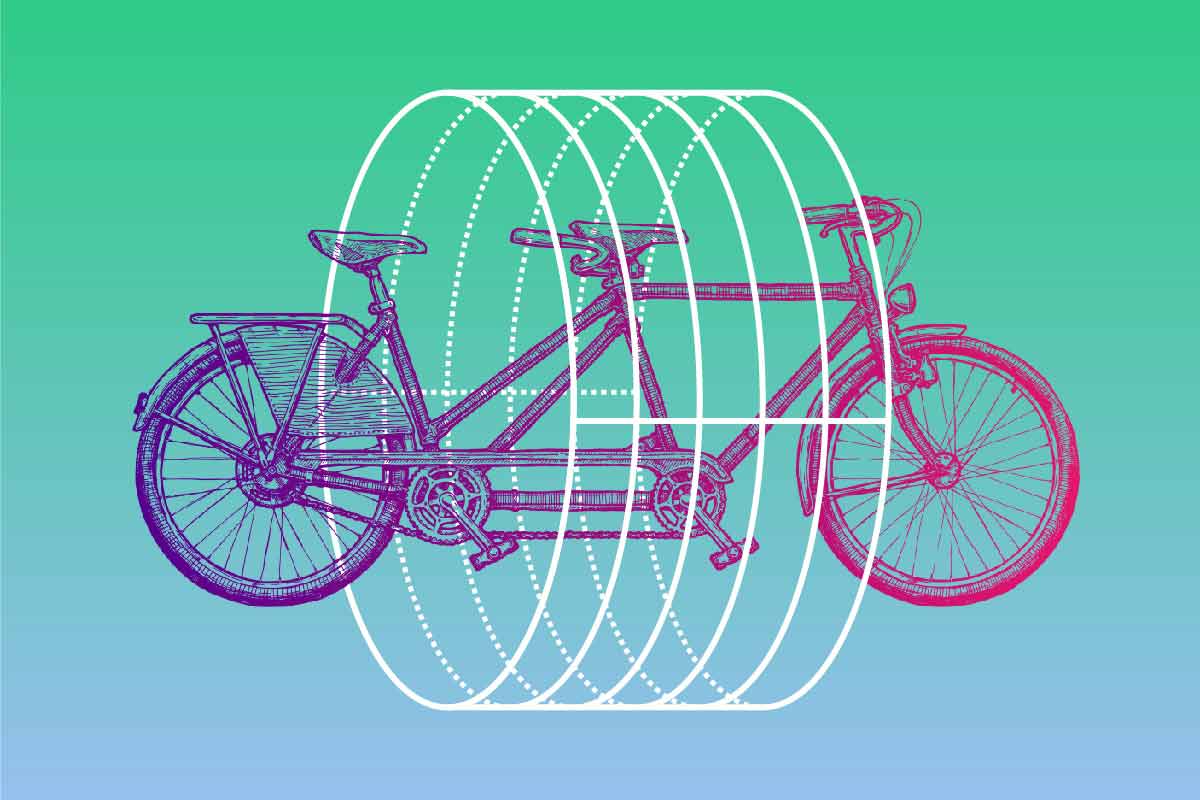It’s the stuff of cold sweat nightmares: you’re midway through a semester you swore was going to be different. You came to each class with optimism and positivity, hoping your students would be more engaged this year. But they’re not, and grades are falling and you can just hear the nagging tone from your department chair asking you why student evaluations haven’t improved yet.
We get it: there’s never been more pressure on faculty and administrators to deliver better student outcomes. That’s why we’ve designed a toolkit—with perspectives from students and professors alike—to help make your classroom more engaging, and the kind of place where students really want to learn.
Read on to find practical techniques and expert commentary from real professors making real changes within their classrooms.
Contents
1. The principles of engagement
2. Active learning in practice
3. Finding the right technology for your course
4. Beyond the basics
5. Additional resources
Chapter 1: The principles of engagement

When students are engaged in their learning, they become motivated to succeed. It sounds simple, right? In an overview of 93 research studies covering the modern classroom in ten countries, Nick Zepke and Linda Leach from Massey University found that teachers themselves, and the learning relationships they create with students, were among the most important contributors to student success.
There’s no better way to start creating engagement than by directly asking students themselves what they need. This is what students tell us is important to their success—from being able to make connections, to the kinds of teaching styles they responded to most readily.
“[We] need to be nurtured, and need to build relationships with professors and one another, in order to succeed,” says one student in the piece below.
What students need to succeed in class
Student engagement is an enormous topic, and what works in one class won’t necessarily transfer to another. If you’re wondering where to get started, here is a bite-sized list of the most well-known techniques. Some examples include:
- Participatory teaching
- Cooperative learning
- Tackling real world problems in class
19 student engagement strategies you can start with in your course
The kind of emotional connections and learning relationships that foster an engaged student environment are not just skills that will enhance a student’s GPA—they enhance a student’s life. Professor Sarah Rose Cavanagh explains the importance of engagement in the classroom—that teaching should try to focus more on emotional engagement and life skills than on repetition of facts.
“We need to fight back against this idea of higher education just being about work skills,” says Cavanagh. “I think that this idea that we know what jobs [students are] going to have, that we know the skills that they’re going to need in the workplace, is not really realistic in our constantly changing world.
“Really, the skills they’re going to need to go into the workplace are to be creative, to think on their feet, to develop, to see where new learning needs to take place and then develop that learning.”
Why this prof thinks engagement is in need of an emotional rescue – Sarah Rose Cavanagh
Chapter 2: Active learning in practice

One of the most important things you should do when your class starts learning a new topic is to establish a baseline of existing knowledge.
So, how much do you know about active learning?
Quiz: How Much Do You Really Know About Active Learning?
Our free resources page on active learning offers examples of active learning in practice, complete with actionable tips for implementing it in your class.
Explore the rise of active learning, its positive impact on student outcomes and see how technology has made it easier than ever to implement at scale.
As the video above shows you, even if you teach an introductory course with hundreds of students, you can still use active learning techniques. University of Connecticut Professor John Redden uses active learning to teach undergraduate anatomy and physiology in course sections of more than 500 students.
“Most of us get in the habit of teaching similarly from semester to semester, and there’s comfort in that,” says Redden. But even if traditional lectures aren’t broken for you, and “might be working for some of the students, the research would show that it’s not working for everybody in the classroom.”
Why Active Learning Matters Right Now
Changing to an active learning model might be hard for professors, but students sometimes have difficulty adapting too. Learner resistance to new teaching techniques can range from simple shyness and stonewalling, to outright rebellion.
The good news? You can plan for this and work with students so they can get the most out of active learning. Metacognition—learning about learning—is one of your secret sauces. If members of your classroom are focused on their grades and not on participation, then letting them know that participation raises grades will prick their interest. (And, as Cavanagh says above, help them learn some more life skills.)
How to Engage Students in Active Learning
What does this actually look like in class, though? One of Top Hat’s most popular blog posts features two instructors discussing practical tips for introducing active learning activities into the classroom, including peer critique, open-ended discussion and effective use of multimedia.
“Open-ended questions don’t take any planning. All they take is a class with at least one student who isn’t too shy,” explains Chris Merlo, who teaches computer science. The tricky thing is getting more than the same three students to participate; but he discovered asking a question like: ‘What is the most difficult thing about X?’ tapped into students’ need to communicate, and sparked a lively discussion with everyone. (In active learning parlance, this teaching technique is called ‘the muddiest point’.)
6 Interactive Classroom Activities for College Students
Chapter 3: Finding the right technology for your course

Classroom sizes, particularly in first-year undergraduate introductory courses, are getting larger and larger—a process known as massification. Professors may think active learning is impossible and unwieldy in these situations. But this is a surprising place that technology can help out.
Although cellphones and laptops have long been accused of jeopardizing student attention spans, they can be employed to reclaim huge classrooms and lecture theaters, and make students pay careful attention again.
Creating a ‘Small-Classroom’ Feeling Matters—And Tech is the Solution
What’s one of the keys to understanding how technology works with learning? As the blog post below explains, students need instruction on how to find credible resources and direction on providing proper attribution when they use these resources.
Technology, in a learning capacity, shines by connecting students with online groups and virtual communities in real time, or helping them collaborate on group projects with tools such as wikis and cloud-based apps.
Technology can be transformed from a distraction to an effective teaching tool when used with intention.
How Does Technology Impact Student Learning?
There may be no better example of how technology can easily be used in the classroom than YouTube—Generation Z’s choice of social network. According to a recent study conducted by Pew Research Center, 85 percent of 13- to 17-year-olds say they use the platform (compared with Instagram, at 72 percent, and Facebook at a mere 51 percent).
YouTube is, at its heart, a social network based on commenting, reactions and participation. Learn how you can use YouTube’s features in class (and outside of it)—and not just by playing videos during your lessons.
YouTube in the Classroom: 7 Tips and Best Practices
There’s a great deal of work being done on finding out how technology can currently be used in the classroom—so much so, it’s hard to see what’s happening in the future.
Phil Hill, edtech expert at MindWires Consulting, has been working with educational technology for the past decade and sees a common trajectory. “You can’t look at trends in higher education over the next five to ten years as just a projection of what already happened,” says Hill. “People are finding ways to rethink things, and they’re coming up with new models.”
What can we expect in the next few decades? Find out more here.
Q&A: Phil Hill on Technology Trends in Higher Education
Chapter 4: Beyond the basics

Active learning techniques aren’t only effective for increasing retention, improving student feedback and raising grades—they’re also helpful for students who might otherwise struggle with the traditional “chalk-and-talk” structure of learning. There’s a direct link between active learning and inclusive teaching: through creating a sense of belonging, and through making sure all learning methods have been designed with different abilities in mind.
And of course, for many students, this is the first time they or anyone in their family has been in an academic environment, and they may not know what to do. “There are students that don’t know what office hours are,” says John Redden in the article below. “Students can think office hours are the time when I’m in my office and don’t want to be bothered because I’m working on a research project or something like that.”
4 Ways Professors Can Make Their Classes More Inclusive
Troy Wood, Associate Professor at the University at Buffalo, started experimenting with technology in the classroom when clickers were first becoming popular, back in 2002.
Things have changed significantly since then.
Wood really started to understand the power that tech could play in the classroom when he realised he could use the data that his students generated through their active learning activities to improve his course—and their outcomes. “It turns out that by using the classroom response systems, I’ve become much more efficient in my lectures,” he says. “I have actually gained time because of doing this.”
How Data Can Make You a More Agile Educator
Technology is not just a helpful tool to monitor students, it can also identify those who might need help. Karen Quevillon teaches writing and literature, online and in-class, across several colleges in Ontario, Canada. Here, she explains how you can anticipate students who might drop out by structuring your course well and learning when to reach out.
“Attendance is the number one predictor of student success,” she writes.
How To Spot Struggling Students Early and Help Them Succeed
Additional Resources
Student engagement is a journey worth starting. Download our e-books to learn more about how to effectively implement it in your classroom—no matter what stage you’re at.
This first guide assembles stories from 13 instructors from across North America, explaining the challenges they faced, the solutions they devised and the lasting impact their changes have had on their classrooms.
Top Tactics for Creating a More Engaged Classroom
And learn how top educators have harnessed digital textbooks—with active learning features built right in—to help them improve student learning and engagement.
Have technology work for you, not against you.
Active Learning: The Perfect Pedagogy for a Digital Classroom


